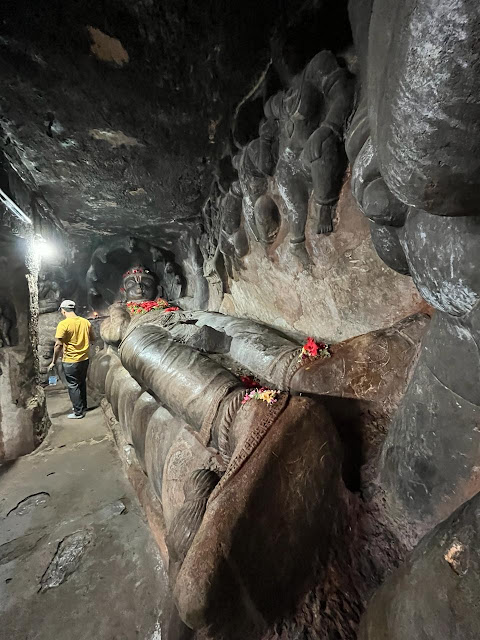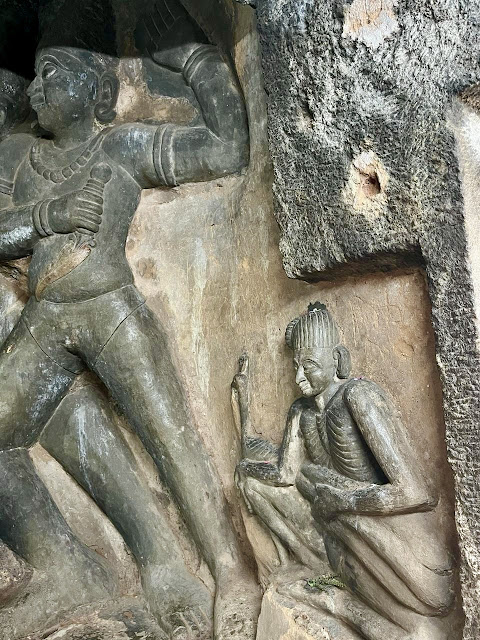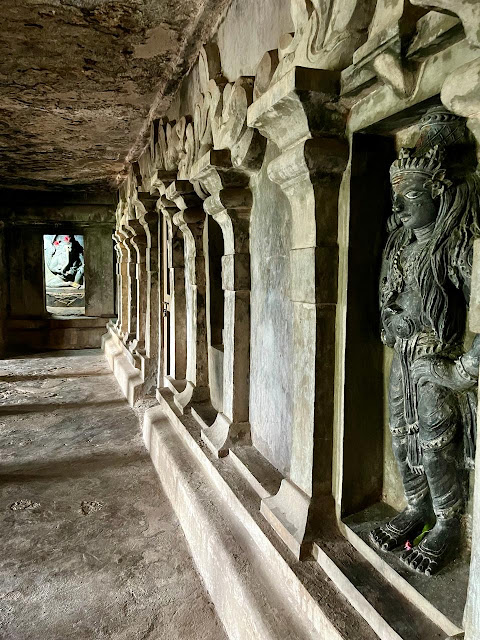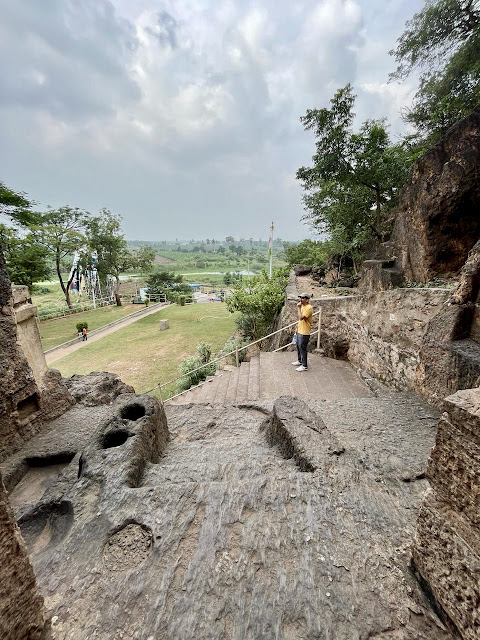Anupu is a Buddhist archaeological site located on the banks of Krishna river, about 18 Km from Nagarjuna Sagar. It is 80 hectare site that contains ruins of Buddhist university, an amphitheatre and monasteries which were said to have been established by famous Buddhist philosopher Acharya Nagarjuna. The Nagarjuna Sagar is partially in Palnadu, Andhra and partially in Nalgonda, Telangana. Distance of Nagarjuna Sagar from Vijaywada is about 205 km and from Hyderabad is 156 km.
2. Acharya Nagarjuna was a great Buddhist philosopher and logician and is also known as the Second Buddha. He wrote many books of which Mulamadhamakakarika is best known for logically upholding the Buddhist principals. Central concept of Nagarjuna is 'emptiness or Sunyata of all things'. He stated that 'all things and phenomena are empty of intrinsic-nature or Svabhava' and that all things are inter-dependent.
3. In December 1955 Prime Minister Nehru inaugurated the construction of masonary Nagarjuna Sagar Dam which went on for 12 years. For this Muktyala Raja ( Raja Vasireddy Ramgopala Krishna Maheswara Prasad ) donated a sum of 110 million GBP and 55000 acres of land. Prior to starting construction of the dam there was intense debate in Parliament on heritage vs development but the dam lobby won.
4. The construction of the dam was to submerge an ancient Buddhist settlement at the reservoir site. The site called Vijayapuri, was the capital of Ikshvaku kings in 1st and 2nd centuries. These kings were successors of Satvahanas in the Eastern Deccan. The Buddhist settlement was therefore excavated before building the dam. The ruins, bricks, pillars etc were picked up and painstakingly rearranged in Anupu village. Large number of artefacts found during digging were moved to a museum on the hill island of Nagarjunakonda in the middle of reservoir.
5. Early morning visit is suggested as it is cool in the morning. Buddhist University and an amphitheatre are spread across a large area and one needs to walk around quite a bit. Afternoon sun is hot. There is no restaurant. Guide was also not available at the time of visit. Ample parking area is available. No entry fee. Site remains open from sunrise till sunset. The place is pretty scenic and beautiful.
6. A small river beach on backwaters of River Krishna is at a distance of about 2 km. No proper road is there. However fishermen use this place with couple of boats and pick-up vans. Otherwise its a lonely but pleasant site.
Some photographs:
 |
| 1. Many such short and tall pillars are seen in Anupu |
 |
| 2. Rearranged Buddhist Stupa of red baked bricks |
 |
| 3. Methodically laid out rooms and broad lanes of university |
 |
| 4. White pillars in brick work |
 |
| 5. This may have been part of a hall |
 |
| 6. Looks like a class room with a place for teacher on the podium |
 |
| 7. Under the cool shade of Peepal Tree planted by Dalai Lama. Afternoons are hot here |
 |
| 8. Entrance to Amphitheatre |
 |
| 9. Performance area of the amphitheatre. Area might be 100' 300' with large seating capacity and a slope on the top |
 |
| 10. Lovely carving may be for water management |
 |
| 11. Meditation Cells |
 |
| 12. Stupa platform made up of broad red bricks is quite high |
 |
| 13. Notice Board |
 |
| 14. Location of Anupu |
 |
| 15. Excerpts from ASI report of 1954 - 55 about excavations that took place prior to building of Nagarjuna Sagar Dam |

































